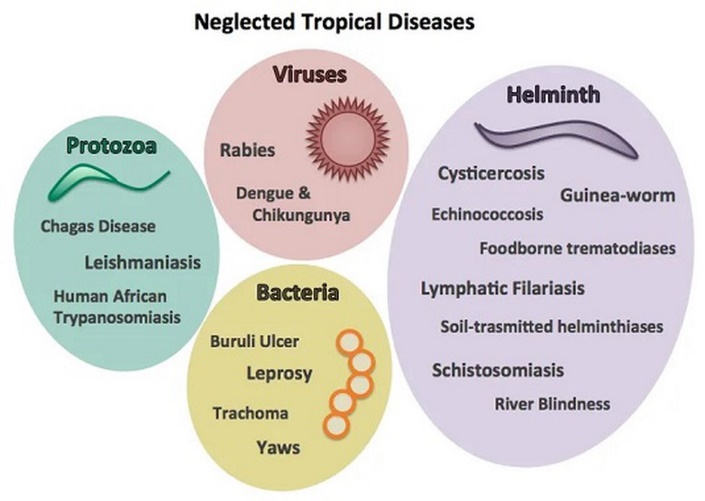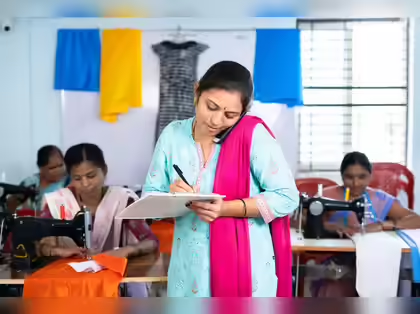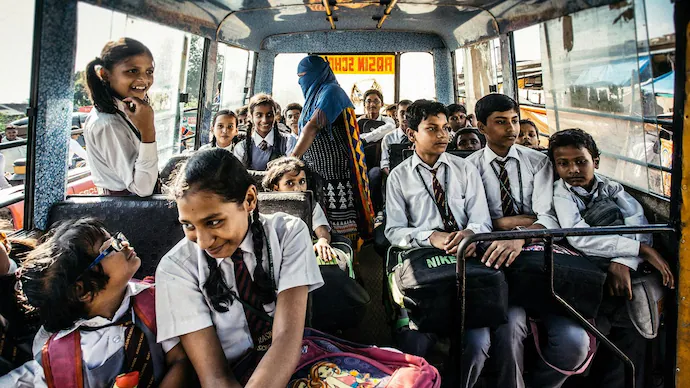- Courses
- GS Full Course 1 Year
- GS Full Course 2 Year
- GS Full Course 3 Year
- GS Full Course Till Selection
- Answer Alpha: Mains 2025 Mentorship
- MEP (Mains Enrichment Programme) Data, Facts
- Essay Target – 150+ Marks
- Online Program
- GS Recorded Course
- Polity
- Geography
- Economy
- Ancient, Medieval and Art & Culture AMAC
- Modern India, Post Independence & World History
- Environment
- Governance
- Science & Technology
- International Relations and Internal Security
- Disaster Management
- Ethics
- NCERT Current Affairs
- Indian Society and Social Issue
- NCERT- Science and Technology
- NCERT - Geography
- NCERT - Ancient History
- NCERT- World History
- NCERT Modern History
- NCERT Medieval History
- CSAT
- 5 LAYERED ARJUNA Mentorship
- Public Administration Optional
- ABOUT US
- OUR TOPPERS
- TEST SERIES
- FREE STUDY MATERIAL
- VIDEOS
- CONTACT US
How AIIMS Module Made India Trachoma-Free
How AIIMS Module Made India Trachoma-Free
14-10-2024
- The World Health Organization (WHO) has officially recognized India for eliminating Trachoma as a public health issue and praised the collaboration between government, health workers, and partners.
- This milestone comes after years of dedicated efforts by the government to protect the vision of millions, emphasizing the importance of healthy eyesight for every individual.
What is Trachoma?
- Trachoma, caused by bacterium Chlamydia Trachomatis, is a contagious bacterial eye infection that can lead to irreversible blindness if untreated. It is caused by poor hygiene and unclean water.
- It spreads through direct contact with secretions of infected individuals (via hands, clothes, bedding or hard surfaces) or indirectly via flies and remains a leading infectious cause of blindness worldwide.
- With repeated episodes of infection over many years, the eyelashes may be drawn in so that they rub on the surface of the eye. This causes pain and may permanently damage the cornea.
- It is a public health problem in 39 countries and is responsible for the blindness or visual impairment of about 1.9 million people.
- WHO estimates around 150 million people worldwide are affected by Trachoma and 6 million of them are blind or at risk of visually disabling complications. The infective stages of trachoma are usually found in children.
- In 2023, 1.3 million people received surgical treatment for advanced stage of the disease, and 33 million people were treated with antibiotics. Global antibiotic coverage in 2023 was 29%.
- Trachoma is hyperendemic in many of the poorest rural areas of Africa, Central and South America, Asia, Australia, and the Middle East. Africa remains the most affected continent.
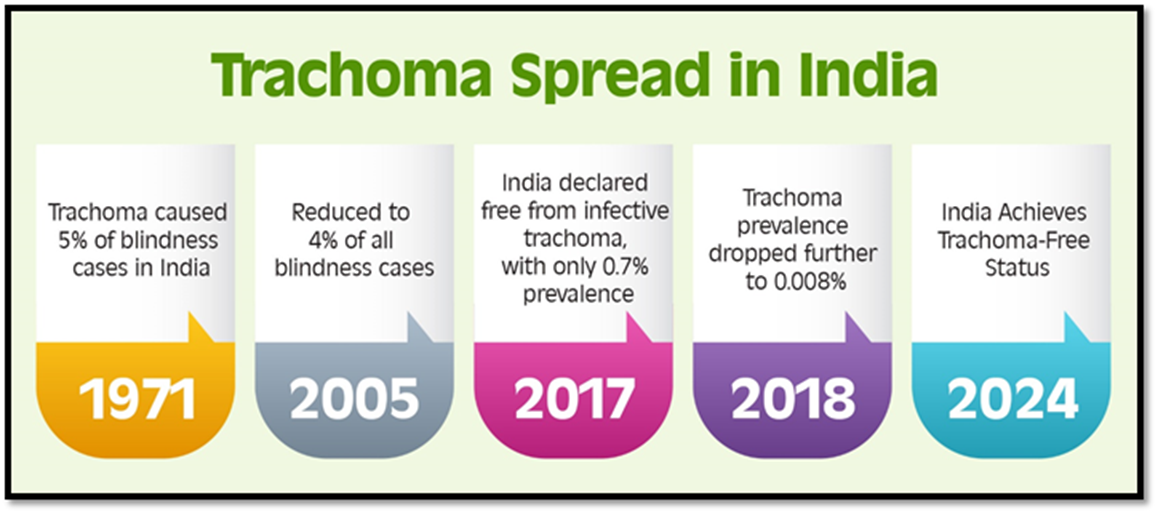
- Trachoma imposes a heavy economic burden. The annual cost due to lost productivity from blindness and visual impairment is estimated between USD 3-5.3 billion, rising to USD 8 billion when including trichiasis.
Prevention and Control
- Endemic countries are implementing WHO's SAFE strategy, which includes:
- Surgery for trachomatous trichiasis (blinding stage),
- Antibiotics (azithromycin) for mass drug administration,
- Facial Cleanliness to reduce infection spread,
- Environmental Improvement, focusing on water and sanitation.
- WHO adopted the SAFE strategy in 1993 and launched the Global Elimination of Trachoma by 2020 initiative in 1996. The World Health Assembly's resolution in 1998 set the elimination goal for 2020.
- The target was updated to 2030 in the Neglected Tropical Diseases road map 2021–2030. WHO leads international efforts to eliminate trachoma and supports member states through surveys, monitoring, and resource mobilization.
India’s Victory Against Trachoma
- In the 1950s and 1960s, trachoma was a major public health issue, affecting over 50% of the population in states like Gujarat, Rajasthan, Punjab, Haryana, Uttar Pradesh, and Nicobar Islands.
- By 1971, it caused 5% of all blindness cases in India.
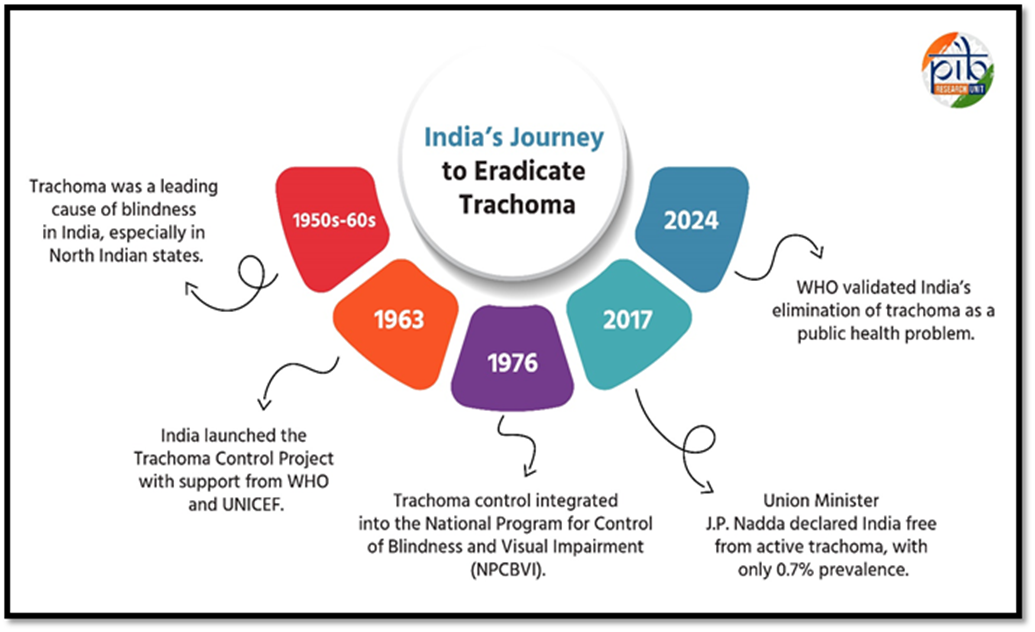
Initiatives to Combat Trachoma
- India's efforts were driven by the National Programme for Control of Blindness and Visual Impairment (NPCBVI) and the adoption of the WHO SAFE strategy, focusing on treatment and prevent future infections.
- National Trachoma Control Program (1963): Supported by WHO and UNICEF, it addressed trachoma through:
- Surgical Treatment: Addressing the blinding stage of the disease, known as trachomatous trichiasis.
- Antibiotic Distribution: To treat existing infections.
- Facial Cleanliness: Promoted hygiene to reduce spread.
- Environmental Improvements: Enhancing access to water and sanitation.
- Integration into National Programs (1976): Ensured sustained resources for elimination efforts.
- Significant Progress: By 2005, trachoma caused only 4% of blindness. By 2018, this dropped to 0.008%, confirmed by assessments and surveys.
Elimination of Trachoma
- Success Declared in 2017: India was declared free from infective trachoma in 2017, based on the National Trachoma Survey Report (2014-17).
- Active infections among children fell to just 0.7%, far below WHO’s 5% elimination threshold.
- Continued Vigilance (2019-2024): India continued surveillance from 2019 to 2024, ensuring no re-emergence of the disease and maintaining its trachoma-free status.
- India now stands alongside Nepal, Myanmar, and 19 other countries that have also successfully eliminated trachoma as a public health issue.
IMPORTANT FACTS FOR PRELIMSNeglected Tropical Diseases (NTDs)
|
Previous Year UPSC Prelims Question
Consider the following conditions of a sick human body (UPSC Prelims 2003)
1. Swollen lymph nodes
2. Sweating at night
3. Loss of memory
4. Loss of weight
Which of these are symptoms of AIDS?
(a) 1 and 2
(b) 2, 3 and 4
(c) 1, 3 and 4
(d) 1, 2, 3 and 4
Answer: (d) 1, 2, 3 and 4
Practice Question
Consider the following statements:
1. Trachoma is a viral infection that affects the lungs.
2. India has successfully eliminated trachoma.
Which of the above statement(s) is/are correct?
(a) 1 only
(b) 2 only
(c) Both 1 and 2
(d) Neither 1 nor 2
Answer: (b) 2 only
Must Check: Best IAS Coaching In Delhi
UPSC Prelims Result 2024 Out: Expected Cut Off & Other Details, UPSC Prelims 2024 Answer with Explanation, Daily Prelims Quiz, Daily Current Affairs, MONTHLY CURRENT AFFAIRS TOTAL (CAT) MAGAZINE, Best IAS Coaching Institute in Karol Bagh, Best IAS Coaching Institute in Delhi, Daily Mains Question Answer Practice, ENSURE IAS UPSC Toppers, UPSC Toppers Marksheet, Previous Year Interview Questions, UPSC Syllabus

